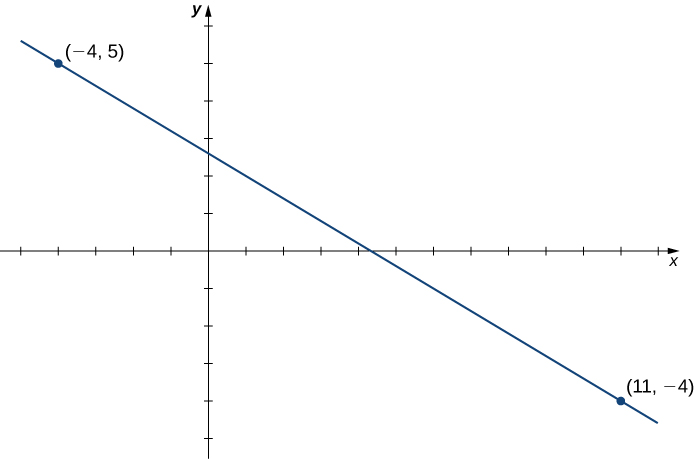| << Chapter < Page | Chapter >> Page > |
We have shown that the coefficient is the slope of the line. We can conclude that the formula describes a line with slope Furthermore, because this line intersects the -axis at the point we see that the -intercept for this linear function is We conclude that the formula tells us the slope, and the -intercept, for this line. Since we often use the symbol to denote the slope of a line, we can write
to denote the slope-intercept form of a linear function.
Sometimes it is convenient to express a linear function in different ways. For example, suppose the graph of a linear function passes through the point and the slope of the line is Since any other point on the graph of must satisfy the equation
this linear function can be expressed by writing
We call this equation the point-slope equation for that linear function.
Since every nonvertical line is the graph of a linear function, the points on a nonvertical line can be described using the slope-intercept or point-slope equations. However, a vertical line does not represent the graph of a function and cannot be expressed in either of these forms. Instead, a vertical line is described by the equation for some constant Since neither the slope-intercept form nor the point-slope form allows for vertical lines, we use the notation
where are both not zero, to denote the standard form of a line .
Consider a line passing through the point with slope The equation
is the point-slope equation for that line.
Consider a line with slope and -intercept The equation
is an equation for that line in slope-intercept form .
The standard form of a line is given by the equation
where and are both not zero. This form is more general because it allows for a vertical line,
Consider the line passing through the points and as shown in [link] .

Consider the line passing through points and Find the slope of the line.
Find an equation of that line in point-slope form. Find an equation of that line in slope-intercept form.
The point-slope form is
The slope-intercept form is
Jessica leaves her house at 5:50 a.m. and goes for a 9-mile run. She returns to her house at 7:08 a.m. Answer the following questions, assuming Jessica runs at a constant pace.


Notification Switch
Would you like to follow the 'Calculus volume 1' conversation and receive update notifications?